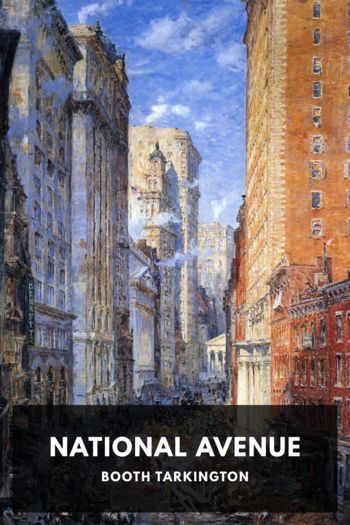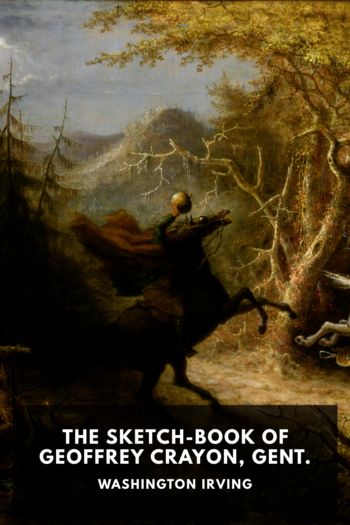Enchanted Evenings:The Broadway Musical from 'Show Boat' to Sondheim and Lloyd Webber by Block, Geoffrey (good story books to read .TXT) 📕

Read free book «Enchanted Evenings:The Broadway Musical from 'Show Boat' to Sondheim and Lloyd Webber by Block, Geoffrey (good story books to read .TXT) 📕» - read online or download for free at americanlibrarybooks.com
Read book online «Enchanted Evenings:The Broadway Musical from 'Show Boat' to Sondheim and Lloyd Webber by Block, Geoffrey (good story books to read .TXT) 📕». Author - Block, Geoffrey
By the time I entered high school I had churlishly abandoned Broadway in favor of Bach, Beethoven, and Ives. As a sophomore I somewhat grudgingly served as rehearsal pianist for South Pacific and the following year still more grudgingly played the saxophone and clarinet in the Guys and Dolls pit band. Soon even Gershwin was suspect. I had not yet read the philosopher and sociologist Theodor Adorno and the highly acclaimed but decidedly unpopular composer Arnold Schoenberg, both of whom vigorously championed and successfully promoted the view that great art was rightfully destined to be unpopular. Only in retrospect did I realize that an ideological and elitist component was somehow connected to my genuine love of classical or “serious” music. Disdain for the music of the masses followed, including hit Broadway musicals, until and unless this repertory could earn endorsements from respectable sources, such as when Leonard Bernstein compared the Beatles’ “She’s Leaving Home” from Sergeant Pepper’s Lonely Hearts Club Band favorably with Schubert.
In the early 1970s graduate students in historical musicology in many programs were strongly discouraged from studying American music of any kind. Instead, my colleagues and I at Harvard dutifully learned to decipher medieval notation and researched such topics as the life and works of King Henry VIII’s Flemish-born court composer Philip van Wilder, Haydn’s opera seria, and what really happened at the first performance of Rite of Spring. A research paper on the chronology and compositional process of Beethoven’s piano concertos evolved into a dissertation and inaugurated my lifetime desire to understand how compositions of all types initially take shape and the practical as well as artistic reasons behind their revision.
These activities did not prevent me from stumbling on a free ticket to Kiss Me, Kate, which to my surprise I enjoyed immensely, despite a negative predisposition. My dormant love for Broadway musicals would receive additional rekindling when, several years later, I found myself the musical director in a private secondary school in Ojai, California, selecting a musical to produce and choosing Kiss Me, Kate to everyone’s enjoyment and delight, including mine. In my second year at The Thacher School I anticipated Crazy for You, the 1992 musical based on Girl Crazy, with my own assemblage of freely interpolated Gershwin songs mixed with songs from the “dated” 1930 show—a triumph of accessibility over authenticity. By the end of that year I completed my doctorate, a milestone that somehow liberated me to explore American popular music of all types.
By then I had witnessed a broadcast in which Stephen Sondheim and conductor André Previn conversed with extraordinary articulateness about what a musical can accomplish.3 Increasingly, stage and film musicals of both recent and ancient vintage occupied a major and passionate role in my life. After teaching a sequence of one-month “winterim” courses on American musical theater at the University of Puget Sound, including one in which students collaborated to create an original musical, I began to teach a Survey of American Musical Theater course first during alternate years and later annually. When faced with the dearth of usable textbooks, I began writing one of my own in the late 1980s. The book would, of course, correspond to what I had been teaching, a musical-by-musical study beginning with Show Boat that focused on the so-called Golden Era from the 1930s to the late 1950s, with a survey of Sondheim to round out the semester. You are now holding this book.
Before the 1990s, books on Broadway musicals were almost without exception written by theater historians and critics. For the most part these journalistic accounts typically covered a large number of musicals somewhat briefly and offered a useful and entertaining mixture of facts, gossip, and criticism. What they did not try to do is address what happens musically or how songs interact with lyrics within a dramatic context.4
Most books on the Broadway musical provided biographical profiles of principal composers and lyricists and plot summaries of popular musicals or those judged artistically significant. Some authors went considerably beyond these parameters, for example, Gerald Bordman by his comprehensiveness and Lehman Engel by focusing more selectively on critical topics and other issues such as adaptation of literary sources.5 Two of the musicals surveyed in the present volume, Show Boat and Porgy and Bess, have inspired book-length monographs, and several musicals and their creators have received rigorously thoughtful scholarly, bibliographic, and critical attention. The fruits of this activity will be duly acknowledged in what follows.6
With few exceptions the musicological community studiously ignored the Broadway terrain. In the 1990s two important books emphasized (or “privileged”) music for the first time: Joseph P. Swain’s The Broadway Musical: A Critical and Musical Survey (1990), a study of selected musicals from Show Boat to Sweeney Todd, and Stephen Banfield’s more specialized study, Sondheim’s Broadway Musicals (1993).7 Swain’s valuable survey contains a great deal of perceptive musical and dramatic criticism and analysis. Nevertheless, Swain only rarely tries to place the discussion in a historical, social, or political context, he presents virtually no documentary history of a musical, and he does not address the questions of how and why musicals evolved as they did, either before opening night or in revival. Most general readers will also find Swain’s analysis, which deals primarily with harmony, too technical to be easily understood. In contrast to Swain, Banfield, who focuses on a body of work by one significant composer-lyricist,





Comments (0)